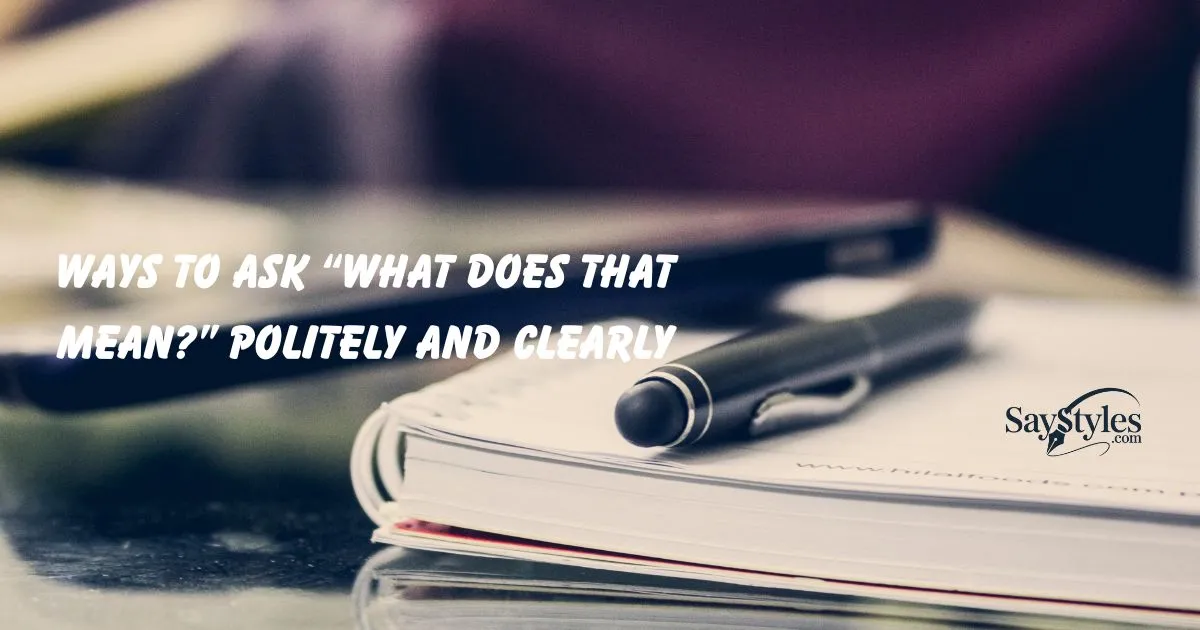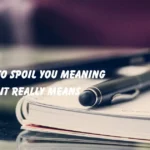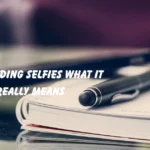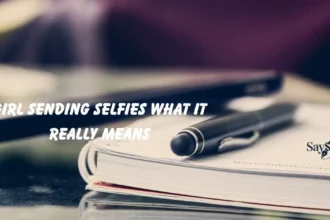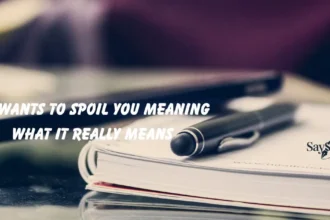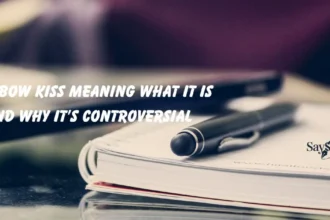In today’s fast-paced conversations whether texting, chatting online, or even in professional emails understanding what someone truly means is essential. That’s knowing ways to ask “What Does That Mean?” politely and clearly comes in handy. This simple question helps you clarify definitions, meanings, or even slang terms without sounding rude or confused.
Whether you’re decoding a tricky expression, an unfamiliar phrase, or online slang, asking politely keeps the conversation smooth and respectful. People often struggle to find the right words and look for alternatives that feel natural, friendly, and clear.
In this guide, you’ll discover practical phrases, examples, and tips to confidently ask for clarification in any situation. By the end, you’ll know exactly how to check a meaning, get explanations, and keep your interactions polite and effective whether in texting, online communication, or everyday conversation.
What Does “Ways to Ask What Does That Mean?’ Politely and Clearly” Mean?
Asking “What does that mean?” is a simple way to seek clarity, but tone and context matter. In real conversations—whether in person, in emails, or in chat—how you phrase it affects how the other person responds. Using polite alternatives ensures your curiosity doesn’t come off as rude or judgmental.
Quick Definition:
It’s the act of asking someone to explain or clarify something you don’t understand. This can be in casual chat, professional discussions, or even in texting slang.
Examples in Real Life:
- Casual: Your friend says, “That’s lit.” You respond: “Wait, what does that mean?”
- Professional: A coworker uses a term in a meeting: “Could you clarify what that means?”
- Texting/Slang: Someone texts, “I’m FOMO-ing tonight.” You reply: “Not sure I follow—what does that mean?”
Essentially, it’s a way to bridge understanding, maintain smooth communication, and avoid confusion. By phrasing it politely, you show respect while still asking for explanation.
See also: He Wants to Spoil You Meaning What It Really Means
Best Alternatives to “What Does That Mean?”
Sometimes saying “What does that mean?” repeatedly can feel blunt. Here are alternatives categorized by tone and situation:
Casual / Friendly
- “Can you explain that?”
- “I’m not sure I follow.”
- “Huh, what’s that about?”
- “Wait, explain this for me.”
- “I don’t get it—help?”
- “Could you break that down?”
- “What do you mean by that?”
- “Sorry, I’m lost—can you clarify?”
Professional / Work Setting
- “Could you clarify your point?”
- “Would you mind explaining that further?”
- “Can you provide an example?”
- “I’d like to understand better—can you elaborate?”
- “Could you expand on that?”
- “Help me understand your perspective.”
- “Could we go over this part again?”
Emphatic / Strong Curiosity
- “I’m really curious—what does that mean?”
- “I need a clearer picture—can you explain?”
- “Can you break this down in detail?”
- “I’m intrigued—what exactly do you mean?”
- “I want to understand this fully.”
- “Could you clarify that for me in simple terms?”
- “Explain like I’m five!”
Playful / Fun
- “Spill the tea—what’s that mean?”
- “Teach me your ways!”
- “Decode that for me?”
- “Say what now?”
- “I’m officially confused—help!”
- “Wait, I’m lost in translation.”
- “Break it down like a boss.”
These alternatives allow you to adjust tone depending on formality, relationship, and context, making your request for clarity sound natural and approachable.
“What Does That Mean?” in Texting / Messaging
In digital communication, brevity and tone are key. Here are 20 quick-use phrases to ask clearly in text or messaging apps:
- “Not sure I get it—what do you mean?”
- “Can you clarify?”
- “What does that mean?”
- “Explain, please!”
- “Huh?”
- “Could you break it down?”
- “I don’t follow, help?”
- “What’s that supposed to mean?”
- “Help me understand this.”
- “Wait, I’m confused.”
- “Mind explaining?”
- “Could you expand on that?”
- “I’m lost—what do you mean?”
- “Can you simplify that?”
- “Could you elaborate?”
- “I need clarification.”
- “Say more about this.”
- “Not clear—please explain.”
- “Help me out here.”
- “I’m curious, what does that mean?”
Pro Tip: For texting, short and friendly works best. Emojis like 🤔 or 🙃 can soften the tone and make your query feel more playful.
When to Use & When to Avoid “What Does That Mean?”
Do’s
- Use it to clarify unfamiliar terms: Especially in professional or technical discussions.
- Use polite alternatives in emails: Shows respect and keeps communication smooth.
- Use casual phrases in texting: Keeps friends engaged without sounding judgmental.
- Ask when context isn’t clear: Avoid making assumptions that could cause misunderstandings.
Don’ts
- Avoid confrontational situations: Asking “What does that mean?” aggressively can seem passive-aggressive.
- Avoid repeatedly without understanding: Constantly asking can annoy the speaker.
- Don’t use sarcastic tone: This may seem mocking rather than curious.
- Avoid overly formal settings without proper phrasing: Use “Could you clarify?” instead.
Being mindful of tone ensures your request for explanation comes across as polite, respectful, and effective.
See also: Rainbow Kiss Meaning What It Is and Why It’s Controversial
Key Insight About Asking “What Does That Mean?” Politely
1. Why should I ask “What does that mean?” politely?
Asking politely ensures clear communication without offending the other person. It shows you’re interested and respectful while seeking clarification
2. What are some polite alternatives to “What does that mean?”
- “Could you explain that further?”
- “I’m not sure I understand — can you clarify?”
- “Would you mind elaborating?”
3. How can I ask without sounding ignorant?
Use friendly or curious tone:
- “Just to make sure I get it…”
- “I’d love to understand this better…”
4. Can I use humor to ask what something means?
Yes, lightly joking can make it casual:
- “Wait, what does that mean again? I’m a little lost 😂”
- Humor works if the context is informal and friendly.
5. Are there professional ways to ask this question?
In work or academic settings:
- “Could you clarify this point for me?”
- “I want to make sure I understand correctly…”
- Using formal phrasing keeps it professional and polite.
6. Should I ask immediately or wait?
It depends. If the conversation allows, ask immediately to avoid misunderstanding. In formal meetings, you may wait for a pause or Q&A session.
7. How can I show appreciation after asking?
Always thank the person for explaining:
- “Thanks for clarifying, that makes sense now!”
- Appreciation shows you value their effort and keeps the conversation positive.
Final Thoughts
Asking “What does that mean?” is more than a phrase it’s a tool to enhance communication. Using polite and clear alternatives, knowing when to ask, and adapting to the situation can make conversations smoother and more enjoyable.
Next time you’re unsure about a word, slang, or expression, pick a friendly or professional alternative and watch how it improves understanding instantly.

I’m Lily Hart, the Admin behind the engaging responses at SayStyles.com! With a knack for blending wit and warmth, I turn every piece of writing into something memorable. From clever advice to fun comebacks, I’m here to make sure every response leaves you smiling and thinking.

